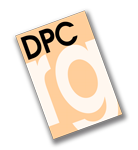El éxito de un proceso constituyente al alcance de la mano (a propósito del proceso constituyente chileno). (RI §424441)

The success of a constituent-making process at our fingertips (on the Chilean constituent-making process) -
Rosario Serra Cristóbal
El éxito de un proceso constituyente depende de las singularidades de cada Estado y de la concurrencia de muy variados elementos a lo largo de dicho proceso. Aún así, hay elementos que han demostrado favorecer Constituciones más estables y longevas. En este trabajo se vienen a sintetizar las cinco etapas principales que acompañarían a la creación de una nueva Constitución y los rasgos que debieran definirlas, que responderían, por seguir un símil, a los atributos que se predican de cada uno de los dedos de una mano —de ahí el título El éxito de un proceso constituyente al alcance de la mano—. El proceso constituyente chileno, aún en sus primeras etapas, va a servir de hilo para efectuar un análisis comparado de esos elementos que en otros procesos constituyentes vividos en diferentes latitudes del planeta han contribuido a la conformación de Constituciones democráticas más exitosas.
I. EL PULGAR: EL CONVENCIMIENTO DE LA CIUDADANÍA SOBRE LA NECESIDAD DE INICIAR UN PROCESO CONSTITUYENTE. – I.1. ¿Qué motiva la apertura de un proceso constituyente?. – I.2. El “momentum constituyente”. – I.3. El plebiscito sobre la apertura del proceso constituyente. – II. EL ÍNDICE: LA ELECCIÓN DE UNA ASAMBLEA CONSTITUYENTE QUE REPRESENTE A LA TOTALIDAD DE LA CIUDADANÍA. – II.1. ¿Qué órgano va a redactar la nueva Constitución?. – II.2. La asamblea/convención constituyente ha de ser reflejo de la pluralidad de la sociedad. – III. EL CORAZÓN: LA REDACCIÓN Y DEBATE DEL PROYECTO DE CONSTITUCIÓN EN LA ASAMBLEA CONSTITUYENTE CON CARÁCTER PLURAL Y ABIERTO. – III.1. Los contenidos de la Constitución. – III.2. ¿Límites materiales en la elaboración del texto constitucional?. – III.3. ¿Cómo ha de redactarse el texto?. – IV. EL ANULAR: ELABORAR UNA CONSTITUCIÓN CON VOCACIÓN DE COMPROMISO – IV.1. El consenso como método. – IV.2. Mayorías reforzadas para la adopción de acuerdos. – IV.3. El referéndum de aprobación del texto constitucional. – V. EL MEÑIQUE: LA NECESIDAD DE QUE LA CONSTITUCIÓN SE DESARROLLE UNA VEZ APROBADA. LA IMPLEMENTACIÓN DE LA CONSTITUCIÓN. – V.1. Una Constitución con vocación de perdurar. – V.2. La implementación del texto constitucional. – VI. UNA LECTURA (CONCLUSIVA) DE LAS LÍNEAS DE PALMA LA MANO.
The success of a constituent process depends on the singularities of each state and the concurrence of many different elements throughout the process. Even so, there are elements that have proven to favour more stable and long-lived constitutions. This paper synthesises the five main stages that would accompany the creation of a new Constitution and the features that should define them, which would respond, to follow a simile, to the attributes that are predicated of each of the fingers of a hand -hence the title The success of a constituent-making process at our fingertips-. The Chilean constituent process, still in its early stages, will serve as a way to carry out a comparative analysis of those elements which in other constituent processes, lived in different latitudes of the planet, have contributed to the conformation of more successful democratic Constitutions.
I. THE THUMB: THE CONVICTION OF THE CITIZENS ON THE NEED TO START A CONSTITUTIONAL PROCESS. – I.1. What motivates the opening of a constituent process? – I.2. The "constituent momentum". – I.3. The plebiscite on the opening of the constituent process. – II. THE INDEX FINGER: THE ELECTION OF A CONSTITUTING ASSEMBLY REPRESENTING THE TOTALITY OF THE CITIZENSHIP. – II.1. What body is going to draft the new Constitution?. – II.2. The constituent assembly/convention must reflect the plurality of society. – III. THE MIDDLE FINGER: THE DRAFTING AND DEBATE OF THE CONSTITUTION IN THE ASSEMBLY WITH A PLURAL AND OPEN CHARACTER. – III.1. The contents of the Constitution.- III.2. Material limits in the drafting of the constitutional text. – III.3. How is the text to be drafted? – IV. THE RING FINGER: DRAWING UP A CONSTITUTION AS A COMPROMISE. – IV.1. Consensus as a method – IV.2. Reinforced majorities for the adoption of agreements – IV.3. The referendum on the approval of the constitutional text. – V. THE LITTLE FINGER: THE IMPLEMENTATION OF THE CONSTITUTION. – V.1. A Constitution with a vocation to last for a long time. – V.2. The implementation of the constitutional text. – VI. A CONCLUSIVE PALM LINES READING.
